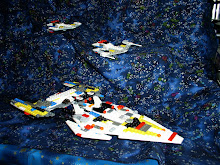Last week, I talked about monitors. It’s something we look at every time we use our computers. Cathode Ray Tube (CRT) and Liquid Crystal Display (LCD) are the two common designs. There’s a third just now hitting the market, but it’s so costly I’ll save that for a future issue.
One of my valued readers asked me: So, what do all the little buttons on the monitor do?
Excellent question. The controls will be different for each type of monitor, and depend on how much you pay. Many LCD’s are “smart” enough to automatically adjust for resolution (the number of dots on the screen). Most have what is called a “native resolution.” That is where the resolution matches the actual number dots that physically make up the screen. Your LCD might have a native resolution of 1280x1024 or some other number of dots. Other resolutions can be created by allowing two or more colors to make up one pixel (the little dots). If you look closely, but not too close, you might see that the dots on an LCD are made of little rectangles.
Other controls run manual positioning (how the video fits on the screen), color (manual adjustment of the red, blue and green parts of light), where the On Screen Display appears and how long it stays visible, what language the display shows (many common languages are English, French, Spanish, German, and Japanese), and a Factory Reset to return any settings to the default settings if something is changed but is not satisfactory.
Please read your owner’s manual for further information on the features of your display. If you don’t have one, you can usually just go to Google ( www.google.com ) and entering the make and model and “owner’s manual” to find it.
With CRT’s, you can also change brightness and contrast, how the view fills the screen (size, both vertical and horizontal), the geometry (making the sides parallel, twisting the view to be parallel with the monitor surround and if the sides bow in or out and how sharp the corners are).
Some people find that CRTs are still better for some uses than LCDs. CRTs can run at different refresh rates (how many times per second the view is drawn on the screen) ranging from 60 to over 100 times per second, called hertz. CRTs also show color differently than LCDs and have more customization features. All CRTs connect via the Video Graphics Adaptor. This is a plug with 15 pins in it and connects to your computer to a blue port. LCDs connect with either the blue VGA plug or a longer, white plug called a Digital Video Interface (or DVI for short). This interface supports higher resolutions, such as for wide-screen and High Definition video. By the way, just having a wide-screen display does not mean it is HD.
If you are looking at a new video display, I would suggest looking at them in person to see what the video quality looks like.


No comments:
Post a Comment